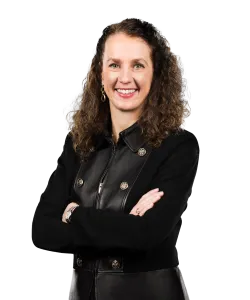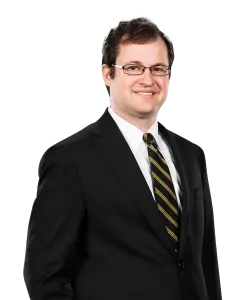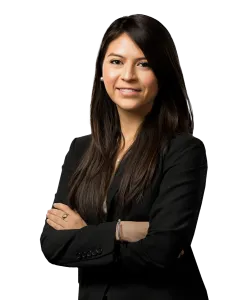Fed Expands Scope of Main Street Lending Program, Updates Benefits for Senior Living Facility Owners and Operators
In response to public feedback to the initial terms of the Main Street Lending Program (the “Program”), the Federal Reserve Board announced on April 30, 2020, an expansion of the loan options available to businesses and an increase in the maximum size of businesses that are eligible to borrow under the Program. The following is an updated version of a previous Client Alert released on April 15, 2020, to highlight certain updates to the Program.
There are now three types of loan facilities under the Program. The New Loan Facility provides new loans to borrowers. The Priority Loan Facility provides new loans to higher-leveraged borrowers that may not benefit from a loan under the New Loan Facility. The Expanded Loan Facility provides additional loans in the form of an additional term loan tranche to borrowers under an existing term or revolving loan facility that has at least 18 months until maturity. Loans issued under the Program are full-recourse to the borrower and not forgivable. Below are details on why the Program (as updated) could be attractive to senior living facility owners and operators, and their lenders.
If you are interested in learning more about the details of the Program, including restrictions on the New Loan Facility, Expanded Loan Facility, and Priority Loan Facility loans, click on this link.
1. Why is the Program (as updated) beneficial for senior living facility owners and operators?
Attractive Interest Rates/Deferred Payments
The loan terms of the Program are very attractive because the interest rate is relatively low (LIBOR (1 or 3 months) plus a fixed spread of 3%) and both principal and interest will be deferred for one year. Program loans will have a term of four years.
New Option to Refinance Existing Debt
Prior to the recent April 30, 2020 updates, the Program prohibited borrowers from using Main Street loan proceeds to repay existing debt. However, the Program has been updated to allow borrowers to use the Priority Loan Facility, at the time of origination of the loan, to refinance existing debt owed by the senior living facility owners and operators to a lender that is not making the Priority Loan Facility loan. Senior living facility owners and operators may be able to use the Priority Loan Facility loan to refinance its existing debt at a lower interest rate and, depending on the available proceeds, may have funds remaining to pay operating expenses.
Favorable Program Changes to Permit Eligibility of Larger Employers and to Permit Smaller Loans
As updated, the Program will offer more options to a wider set of eligible senior living owners and operators:
- larger senior living facility owners and operators may be eligible to access loans through the Program because the maximum employee limit was increased to 15,000 employees (formerly 10,000 employees) and the maximum revenue size was increased to $5 billion in 2019 revenue (formerly $2.5 billion); and
- smaller senior living facility owners and operators may be eligible to access loans through the Program because the minimum loan size for the Program was reduced to $500,000 (formerly $1 million).
2. Do senior living facility owners and operators qualify as “Eligible Borrowers” for the Program?
The updated Program term sheets provide that an “Eligible Borrower” may not be an “Ineligible Business.” Notably, the term Ineligible Business includes “businesses owned by developers and landlords that do not actively use or occupy the assets acquired or improved with the loan proceeds (except Eligible Passive Companies under § 120.111).” Although further guidance about these regulations has not come out, it appears that the OpCo/PropCo structure that is common for senior living facilities meets the conditions necessary to be considered an “Eligible Passive Company.” Unlike passive ownership of office and multifamily properties, senior living owners and operators that are actually operating businesses may be eligible. In a typical OpCo/PropCo structure (i) the PropCo owns the senior living facility assets, and (ii) the OpCo (a) pays market rent to the PropCo and (b) operates those assets under the OpCo business model. Of course, the unique aspects of any particular structure will need to be evaluated to determine if it would qualify for loans under the Program. According to the SBA, an Eligible Passive Company is an entity that leases property to one or more operating companies for conducting the operating company’s business.
Further, the Federal Reserve has noted that EBITDA is the key underwriting metric required for the Program. Therefore, the Program currently applies to operating businesses where the financing, and associated credit risk, are underwritten on the basis of EBITDA. The Federal Reserve acknowledges that the Program does not currently work for asset-based borrowers, like traditional real estate borrowers. However, this may change as the Federal Reserve and the Treasury Department stated that it will be evaluating the feasibility of adjusting the loan eligibility metrics of the Program for asset-based borrowers.
3. What are the differences between the New Loan Facility, the Expanded Loan Facility, and Priority Loan Facility?
|
Loan Options |
New Loan Facility |
Priority Loan Facility |
Expanded Loan Facility |
|---|---|---|---|
|
Type |
New Loan |
New Loan |
Upsized Tranches of Existing Loans with remaining term of at least 18 months |
|
Term |
4 years |
4 years |
4 years |
|
Minimum Loan Size |
$500,000 |
$500,000 |
$10M |
|
Maximum Loan Size |
Lesser of: |
Lesser of |
Lesser of |
|
Risk Retention |
5% |
15% |
5% |
|
Principal Amortization* |
Years 2–4: 33.33% each year |
Years 2–4: 15%, 15%, 70% balloon payment |
Years 2–4: 15%, 15%, 70% balloon payment |
|
Rate |
LIBOR + 3% |
LIBOR + 3% |
LIBOR + 3% |
|
Debt Priority |
Not subordinated to any other indebtedness |
Loan must be senior to or pari passu with, in terms of priority and security, the Borrower’s other loans, other than mortgage debt |
The upsized tranche must be senior to or pari passu with, in terms of priority and security, the Borrower’s other loans, other than mortgage debt. Any collateral securing the underlying loan must secure the Upsized Tranche on a pro-rata basis. |
4. How to apply for the Program?
Details about the application process for the Program have not been released at this time. While waiting for more guidance on this process, it may be helpful for senior living facility owners and operators to gather supporting documentation and consider contacting possible lending relationships to advance discussions in connection with possible financing under the Program.
Contacts
- Related Industries
- Related Practices


